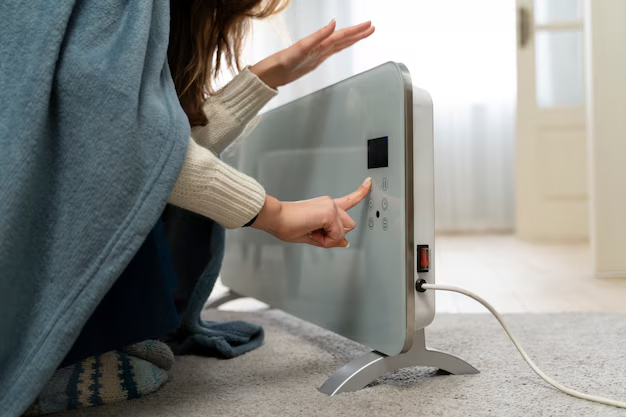Optimal Refrigerator Temperature: What You Need to Know
Have you ever opened your refrigerator, grabbed a cold beverage, and wondered if your appliance is set at the right temperature? If so, you're not alone. Many of us rely on our refrigerators daily without a second thought about the temperature settings. Yet, maintaining the right temperature is crucial for food safety and energy efficiency. So, what temperature should you set your refrigerator to? Let's dive in and explore.
Why Refrigerator Temperature Matters
Food Safety: The primary function of a refrigerator is to keep food safe. The ideal temperature slows down bacterial growth, helping to keep your food fresh longer and reducing the risk of foodborne illnesses.
Energy Efficiency: Setting your refrigerator at the right temperature can help save on energy costs. Too cold, and you’re wasting energy. Too warm, and your food could spoil quickly, forcing you to discard it.
Optimal Performance: Refrigerators function optimally within a certain temperature range. This ensures they're neither overworking to cool excessively cold air nor struggling to keep up with warmer temperatures.
The Ideal Temperature for Refrigerators
General Recommendations: Most experts agree that the ideal refrigerator temperature falls between 35°F and 38°F (about 1.7°C to 3.3°C). This range balances food safety and energy efficiency, keeping perishables fresh without freezing.
Key Considerations:
- Avoid the Danger Zone: Temperatures above 40°F (4°C) can lead to faster bacterial growth.
- Freezing Point: Keeping temperatures below 32°F (0°C) can accidentally freeze some foods, altering their texture and taste.
Fine-Tuning Your Refrigerator Settings
Refrigerator Thermometers: Worth the Investment
Why Use One? Refrigerator thermometers can help verify your appliance’s internal temperature since built-in dials might not always be accurate. Using a thermometer ensures you can achieve the precise measurement crucial for both safety and efficiency.
Seasonal Adjustments
Changing Temperatures: Depending on the climate and season, you might need to adjust your refrigerator’s settings. For instance, hot summers might necessitate a lower setting to maintain the ideal internal temperature.
Compartments and Their Temperatures
Main Compartment
- Top Shelves: Generally warmer, so it's best for items less susceptible to spoiling, like leftovers.
- Bottom Shelves: Typically the coldest; ideal for dairy and other perishables.
Crisper Drawers
- Humidity Matters: Keep fruits and vegetables crisp by adjusting the humidity control. Higher humidity is great for leafy greens, while lower is suitable for fruits.
Freezer Compartment
- Freezing Settings: Aim for 0°F (-18°C) to keep frozen goods safe. Consider investing in an additional thermometer for accuracy.
Practical Tips for Maintaining Perfect Refrigerator Temperature
Proper Food Storage
- Avoid Overloading: Too many items can obstruct air circulation, leading to uneven cooling.
- Organize Strategically: Store items based on their required temperatures and use frequency. Frequently used items should be easily accessible.
- Seal Containers: Properly sealing containers ensures minimal airflow obstruction and keeps food fresh.
Regular Maintenance
- Clean Coils: Dusty coils can make your fridge work inefficiently. Aim to clean them at least twice a year.
- Check Door Seals: Ensure the rubber seals around the doors are not cracked or damaged to maintain a tight seal, preventing cool air from escaping.
Adjustments for Special Circumstances
Events and Gatherings
If you're hosting and expecting the fridge to be opened often, consider setting the temperature slightly lower to compensate for the frequent changes in internal temperature.
Power Outages
In case of power outages, keep the refrigerator doors shut to retain the cool air for as long as possible.
Key Takeaways for Refrigerator Temperature Management
Here’s a quick summary of tips and insights to maintain your refrigerator’s optimal temperature:
- 🔍 Use a thermometer to ensure precise temperature readings.
- 🌡️ Set between 35°F and 38°F for the main compartment.
- ⚙️ Adjust seasonally as necessary, especially during extreme weather conditions.
- 🍎 Organize contents strategically for optimal air circulation.
- 🧊 Keep the freezer at 0°F for long-term storage safety.
- 🔄 Regularly clean and maintain your appliance for efficiency.
- 🚪 Check door seals for wear and tear to prevent energy wastage.
Cooling Off with Confidence
Understanding the nuances of refrigerator temperature maintenance can aid in keeping your food fresh and your energy bills low. Whether you're preparing for seasonal changes or simply looking to maximize the life span of your groceries, paying attention to these details not only leads to a more sustainable kitchen but also contributes to your peace of mind. Next time you reach for something in the fridge, you'll know it's in the best environment possible.
